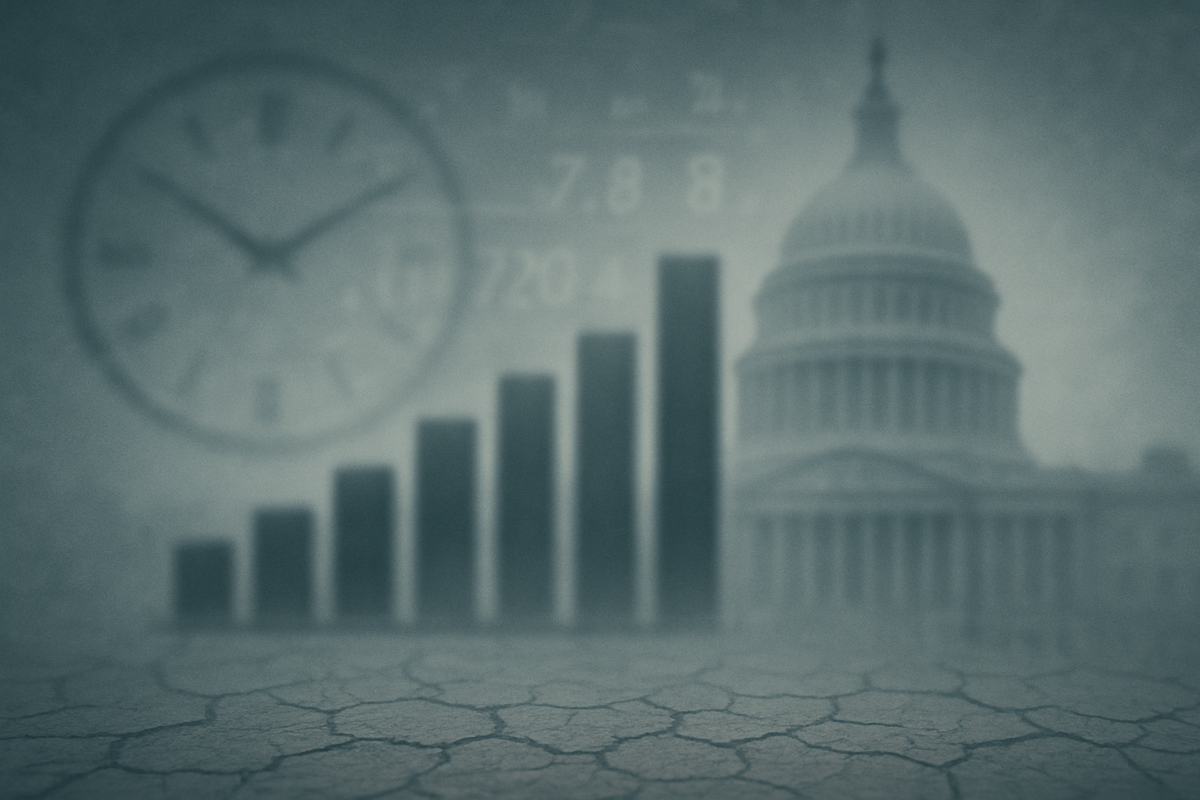
In a financial landscape often driven by real-time data and immediate reactions, the concept of a "data drought" can send tremors through markets. Looking back from November 14, 2025, we revisit a pivotal moment from October 2013 when a federal government shutdown brought the flow of critical economic information to a grinding halt. The much-anticipated release of the delayed September jobs report, originally scheduled for October 4, 2013, became a symbol of this informational void, its eventual publication on October 22, 2013, marking a crucial step towards restoring economic clarity after weeks of market uncertainty.
This historical event serves as a potent reminder of how disruptions to government functions can ripple through the financial ecosystem, impacting everything from investor confidence to Federal Reserve policy decisions. The delayed report wasn't just a statistical release; it was a beacon, offering the first official glimpse into the health of the U.S. labor market before the shutdown's onset. Its absence created a fog that obscured the true economic picture, forcing policymakers and market participants to operate with incomplete information. The eventual release, while a relief, also highlighted the fragility of a system heavily reliant on timely and accurate governmental data.
The Shutdown's Shadow: A Deep Dive into the 2013 Data Blackout
The catalyst for this economic data vacuum was the partial federal government shutdown, which commenced on October 1, 2013, and persisted for 16 days until October 17, 2013. This political impasse, primarily centered on disputes over the Affordable Care Act, led to the furlough of hundreds of thousands of federal workers and the cessation of non-essential government services. Among the most significant casualties for the financial markets was the postponement of key economic indicators, with the September jobs report from the Bureau of Labor Statistics (BLS) being the most prominent.
The timeline of events saw the U.S. Department of Labor announce the delay of the Employment Situation Summary for September on October 3, 2013, just a day before its scheduled release. This immediate consequence of the shutdown left a gaping hole in the economic calendar. For over two weeks, investors, analysts, and policymakers were left to speculate on the health of the U.S. economy, relying on anecdotal evidence and private sector surveys, which lacked the comprehensive scope and authority of official government statistics.
Key players involved in this saga extended beyond just the statistical agencies. The Federal Reserve, under then-Chair Ben Bernanke, found its decision-making process for monetary policy, particularly regarding its quantitative easing program, significantly complicated by the lack of up-to-date employment data. Lawmakers in Congress and the White House were the primary stakeholders whose inability to reach a budget agreement directly caused the shutdown and the subsequent data drought. Initial market reactions were predictably cautious; the S&P 500 (NYSEARCA: SPY) experienced modest declines and increased volatility during the shutdown period, reflecting the heightened uncertainty. Upon the resolution of the shutdown and the announcement of the report's release, markets generally responded positively, relieved that critical information would once again become available. The report itself, released on October 22, 2013, showed that U.S. employers added 148,000 jobs in September, with the unemployment rate falling to 7.2 percent. This indicated a somewhat weaker job market than some had hoped, even before the shutdown's potential impact.
Corporate Fortunes in the Fog: Winners and Losers from Data Uncertainty
During the 2013 data drought, the impact on public companies was nuanced, with some sectors experiencing more direct effects than others. Companies heavily reliant on consumer spending and business investment found themselves in a more precarious position. Retailers, for instance, often look to employment figures and consumer confidence data to gauge future sales. A lack of clarity on the job market could lead to more conservative inventory management and slower investment in expansion. Companies like Walmart (NYSE: WMT) and Target (NYSE: TGT) would have been keenly watching for signs of consumer health.
Conversely, sectors less directly tied to immediate economic sentiment or those with strong existing data streams might have weathered the storm better. Technology companies, particularly those focused on enterprise solutions or cloud services, might have seen less immediate disruption, though overall economic uncertainty could still dampen long-term growth prospects. Financial institutions, such as JPMorgan Chase (NYSE: JPM) and Bank of America (NYSE: BAC), while directly impacted by market volatility and lending sentiment, also played a crucial role in interpreting the limited available data and advising clients, potentially seeing increased demand for their analytical services.
In a broader sense, any company with significant capital expenditure plans or those considering mergers and acquisitions would have faced increased difficulty in making informed decisions without reliable macroeconomic indicators. The absence of a clear picture of economic health could lead to delayed investments, postponed hiring, and a general slowdown in corporate activity. This period underscored the interconnectedness of government data, market sentiment, and corporate strategic planning, highlighting how a seemingly political event could directly influence the operational decisions and stock performance of diverse public companies.
Beyond the Numbers: The Broader Economic Ramifications
The 2013 data drought and the delayed September jobs report transcended a mere scheduling inconvenience; they exposed vulnerabilities in the U.S. economic information infrastructure and had wider significance. This event highlighted how deeply intertwined government data collection is with the functioning of financial markets and economic policy. The absence of official statistics forced a reliance on alternative data sources, which, while useful, lacked the comprehensive scope and credibility of government reports, leading to increased speculation and potential misinterpretations of economic trends.
This period fit into a broader industry trend of increasing demand for real-time, granular data, and the shutdown demonstrated the critical role government agencies play in fulfilling this demand. The ripple effects were felt across various sectors: small businesses struggled to plan without clear economic signals, international investors questioned the stability of the U.S. economy, and the Federal Reserve's forward guidance became more challenging to articulate. Regulatory bodies also faced hurdles, as their oversight functions often rely on up-to-date economic metrics.
Historically, while government shutdowns have occurred before, the 2013 event was particularly notable for its duration and the sheer volume of critical data it suppressed. Comparisons can be drawn to other periods of significant economic uncertainty, such as the initial stages of the 2008 financial crisis, where reliable information was scarce, albeit for different reasons. The 2013 shutdown served as a stark lesson in the potential for political gridlock to translate directly into economic opacity, underscoring the importance of a stable and functioning government for market confidence and efficient capital allocation.
Looking Forward: Lessons from a Past Crisis of Information
The resolution of the 2013 federal shutdown and the subsequent release of the delayed September jobs report ushered in a period of gradual data catch-up, but the event left lasting impressions. In the short term, the market absorbed the delayed information, and other economic reports, such as those for October jobs, CPI, and GDP, were subsequently released. This restoration of data flow helped to stabilize market sentiment and allowed the Federal Reserve to resume its more conventional data-driven approach to monetary policy, eventually leading to the tapering of its quantitative easing program.
Long-term possibilities stemming from such events include a heightened awareness within government agencies and financial institutions about the necessity of contingency plans for data collection and dissemination during periods of disruption. It also underscored the potential for private sector data providers to fill certain gaps, though never fully replacing official statistics. For investors, the event emphasized the importance of diversification and a long-term perspective, as short-term political disruptions can create volatility but often do not derail fundamental economic trends.
Potential strategic pivots required by businesses during such data droughts include developing more robust internal forecasting models, relying on a wider array of alternative data sources, and building greater financial resilience to withstand periods of heightened uncertainty. Market opportunities could emerge for companies specializing in economic analysis and alternative data provision. Conversely, challenges include maintaining investor confidence and making accurate capital allocation decisions in an information-scarce environment. Future scenarios could see similar political impasses, making the 2013 experience a valuable case study for preparing for potential data blackouts and their economic fallout.
A Historical Retrospective: Enduring Insights from the 2013 Data Drought
The 2013 federal shutdown and the delayed September jobs report remain a compelling historical case study in the intersection of politics, economics, and financial markets. The key takeaway from this event is the profound impact that the timely and consistent release of government economic data has on market stability and informed decision-making. The "data drought" period underscored how critical these statistics are for businesses, investors, and policymakers to accurately assess economic health and plot future courses.
Moving forward from a historical perspective, the market demonstrated its resilience, gradually recovering as data flow was restored. However, the episode highlighted the vulnerabilities inherent in a system where political disputes can directly impede economic transparency. It served as a potent reminder that while market fundamentals are crucial, external factors, such as government functionality, can introduce significant short-term volatility and uncertainty.
Investors should continue to watch for any signs of political instability that could impact government operations and data releases. The 2013 experience teaches us that while such events can create temporary market dislocations, the underlying economic engine often finds a way to adapt. The lasting impact is a reinforced understanding of the value of reliable information and the interconnectedness of all facets of the economy. This content is intended for informational purposes only and is not financial advice.
--- This content is intended for informational purposes only and is not financial advice







